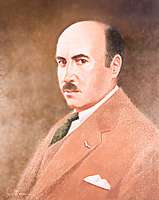Inducted in 1970
First To Design, Produce And Fly A Helicopter In The Western Hemisphere, 1940
1889 – 1972
Germany produced the world’s first controllable transport helicopter in 1940 (the Focke-Achgelis Fa 223 kite), but was slow to exploit the achievement. As a result, Russian Igor Sikorsky was the first to successfully design a practical helicopter.
Sikorsky’s early attempts to fly a helicopter ended in failure and he transferred his interest to fixed-wing aircraft. Giant aircraft such as his “Le Grande” of 1913, the world’s first four-engine airplane, became his trademark.
The Soviet Revolution of 1917 forced Sikorsky to flee Russia. Almost penniless, he made New York his new home and attempted a fresh start. He reestablished his reputation as a great aircraft designer with the twin engine S-29-A. However, he soon abandoned his pursuit of fixed-wing airplanes to return to the subject of his earliest enthusiasm, rotating winged aircraft.
Sikorsky subsequently developed the VS-300 helicopter. This machine had a single main lifting rotor and a small vertical rotor at the tail to offset twisting effects and to supply directional control. The VS-300 made its first successful free flight on May 13, 1940, and set a world endurance record for helicopters of one hour and 32.5 minutes in May 1941.
In later years, Sikorsky’s successes were followed by an ever-improving series of helicopters bearing his name, such as the S-64 “Skycrane,” a flying crane capable of carrying a load of 22,400 pounds. Before his death at age 83, Sikorsky witnessed the worldwide use of helicopters for civilian and military purposes.

